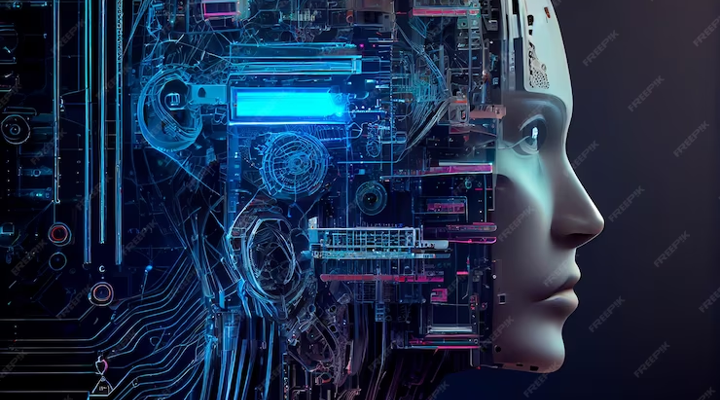In the fast-paced world of technology, one term that continually dominates headlines and fuels our imagination is “Artificial Intelligence” or AI. You may have heard it mentioned in the context of self-driving cars, virtual assistants, or even healthcare advancements. But what exactly is Artificial Intelligence, and why is it a topic of such fascination and importance?
In this article, we’ll embark on a journey to explain AI, breaking down complex concepts into plain language that anyone can grasp. By the end of this read, you’ll understand what AI is and appreciate its profound impact on our lives and the future.
What Is Artificial Intelligence?
Artificial Intelligence refers to the simulation of human intelligence in machines, enabling them to perform tasks that typically require human intelligence, such as visual perception, speech recognition, decision-making, and problem-solving.
AI is built on a foundation of computer science, mathematics, and neuroscience, with the goal of creating systems that can learn, reason, and adapt.
How Artificial Intelligence Works?
Let’s delve into the mechanics of AI in a straightforward and accessible manner:
Machine Learning
Machine learning is a subset of AI where computers are trained to learn from data. Instead of explicit programming, they use patterns and algorithms to make decisions.
Machine learning allows AI systems to improve their performance over time, making them more accurate and efficient.
Deep Learning
Deep learning is a subfield of machine learning that involves artificial neural networks inspired by the human brain. Deep learning excels at tasks like image and speech recognition.
Deep learning has powered many recent AI breakthroughs, including facial recognition and language translation.
Natural Language Processing (NLP)
NLP is a branch of AI that focuses on the interaction between computers and human language. It enables machines to understand, interpret, and generate human language.
NLP powers virtual assistants like Siri and chatbots, making human-computer communication more natural.
Computer Vision
Computer vision allows machines to interpret and understand visual information from the world, such as images and videos. It plays a crucial role in facial recognition and autonomous vehicles. Computer vision enables AI to perceive and interact with the physical world.
Real-World Applications
AI is not just a futuristic concept; it’s already transforming various aspects of our lives:
Virtual Assistants
Virtual assistants like Siri, Alexa, and Google Assistant use NLP to understand and respond to voice commands.

Healthcare
AI helps analyze medical data, assist in diagnoses, and even perform surgeries with precision.

Autonomous Vehicles
Self-driving cars use AI, computer vision, and sensors to navigate roads safely.

Finance
AI algorithms analyze financial data for fraud detection, trading, and investment recommendations.
Education
AI-powered educational tools provide personalized learning experiences for students.
The Future of AI
Artificial Intelligence continues to evolve and find new applications across various industries. Its potential to automate tasks, improve decision-making, and enhance our lives is limitless. As we move forward, understanding AI will become increasingly important, whether you’re a student, a professional, or simply someone curious about the ever-advancing world of technology.
In conclusion, Artificial Intelligence is not just a technological marvel; it’s a powerful tool that has the potential to reshape our world. It’s making our lives more convenient, efficient, and innovative. Whether you’re interacting with a virtual assistant, benefiting from AI in healthcare, or experiencing the wonders of autonomous vehicles, AI is already a part of your life. Embracing and understanding this technology will be key to thriving in the future, where AI will continue to be a driving force in innovation and progress.


